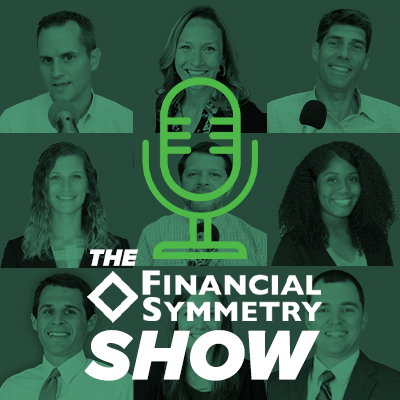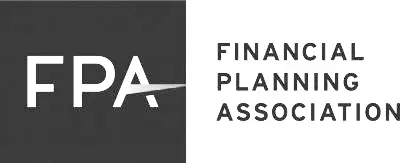Last year we wrote about new 401k fee disclosure requirements and the evidence suggesting that most 401k participants did not know they were paying for any plan costs. The structure of the investment industry has kept many investors in the dark about fees associated with their retirement plan s. The new Department of Labor requirements shed light on the tangible costs associated with saving for retirement.
s. The new Department of Labor requirements shed light on the tangible costs associated with saving for retirement.
The article below from the Financial Planning Association® discusses this issue in more detail and breaks down the fees inherent in employer sponsored retirement accounts.
While being aware of and keeping investment costs low is an important factor in your long term financial health, there are many other important factors to consider such as expected rate of return, employer match, and mutual fund management.
In most cases fees alone are neither a reason to accept or reject an investment. For example, small cap and emerging market funds will typically have higher expense ratios than large cap US funds; however, their long term rates of return are typically higher as well.
As financial planners, these are things we take into account when incorporating employer sponsored plans into a comprehensive investment strategy. Please contact us if you have questions about the costs associated with your plan.
Understanding the Fees Associated With Your Retirement Plan
There’s a little secret associated with your workplace-sponsored retirement plan. Most participants think their plan is free – that it doesn’t cost them anything to join, contribute, and invest. Unfortunately, that’s not entirely true.
While employees typically aren’t charged any out-of-pocket costs to participate in their plans, participants do pay expenses, many of which are difficult to find and even more difficult to calculate. New regulations from the Department of Labor (DOL), which oversees qualified workplace retirement plans, should make it easier for participants to locate and comprehend how much they are paying for the services and benefits they receive.
Here’s a summary of the information you should receive.
Investment-related information, including information on each investment’s performance, expense ratios, and fees charged directly to participant accounts. These fees and expenses are typically deducted from your investment returns before the returns (loss or gain) are posted to your account. Previously, they were not itemized on your statement.
Plan administrative expenses, including an explanation of fees or expenses not included in the investment fees charged to the participant. These charges can include legal, recordkeeping, or consulting expenses.
Individual participant expenses, which details fees charged for services such as loans and investment advice. The new disclosure would also alert participants to charges for any redemption or transfer fees.
General plan information, including information regarding the investments in the plan and the participant’s ability to manage their investments. Most of this information is already included in a document called the Summary Plan Description (SPD). Your plan was required to send you an SPD once every five years, now they must send one annually.
These regulations have been hailed by many industry experts as a much-needed step toward helping participants better understand investing in their company-sponsored retirement plans. Why should you take the time to learn more about fees? One very important reason: Understanding expenses could save you thousands of dollars over the long term.
Calculating Fees and Their Impact on Your Account
While fees shouldn’t be your only determinant when selecting investments, costs should be a key consideration of any potential investment opportunity. For example, consider two similar mutual funds. Fund A has an expense ratio of 0.99%, while Fund B has an expense ratio of 1.34%. At first look, a difference of 0.35% doesn’t seem like a big deal. Over time, however, that small sum can add up, as the table below demonstrates.
| Expense ratio | Initial investment | Annual return | Balance after 20 years | Expenses paid to the fund | |
| Fund A | 0.99% | $100,000 | 7% | $317,462 | $37,244 |
| Fund B | 1.34% | $100,000 | 7% | $296,001 | $48,405 |
Over this 20-year time period, Fund B was $11,161 more expensive than Fund A. You can perform actual fund-to-fund comparisons for your investments using the FINRA Fund Analyzer.
If you have questions about the fees charged by the investments available through your workplace retirement plan, speak to your plan administrator or your financial professional.
© 2013 S&P Capital IQ Financial Communications. All rights reserved.
Source/Disclaimer
Investments are not FDIC-insured, nor are they deposits of or guaranteed by a bank or any other entity, so you may lose money. Past performance is no guarantee of future results. For more complete information about any mutual fund, including risk, charges, and expenses, please obtain a prospectus. Please read the prospectus carefully before you invest. Call the appropriate mutual fund company for the most recent month-end performance results. Current performance may be lower or higher than the hypothetical performance data quoted. The hypothetical data quoted is for illustrative purposes only and is not indicative of the performance of any actual investments. Investment return and principal value will fluctuate; and shares, when redeemed, may be worth more or less than their original cost.
Because of the possibility of human or mechanical error by S&P Capital IQ Financial Communications or its sources, neither S&P Capital IQ Financial Communications nor its sources guarantees the accuracy, adequacy, completeness or availability of any information and is not responsible for any errors or omissions or for the results obtained from the use of such information. In no event shall S&P Capital IQ Financial Communications be liable for any indirect, special or consequential damages in connection with subscriber’s or others’ use of the content.
Photo credit: azrasta





